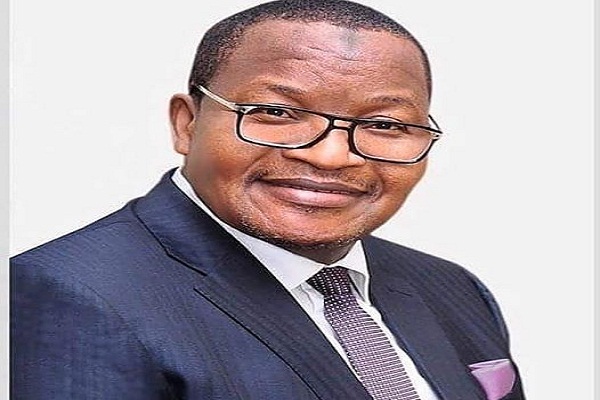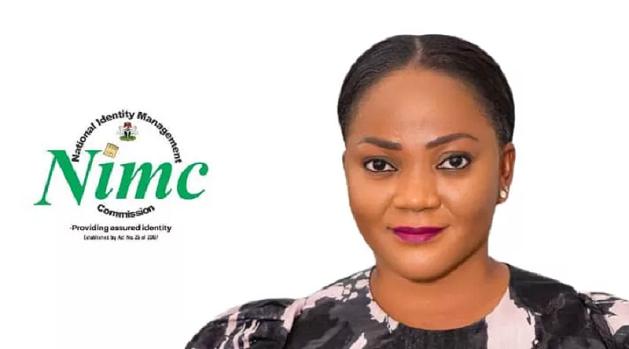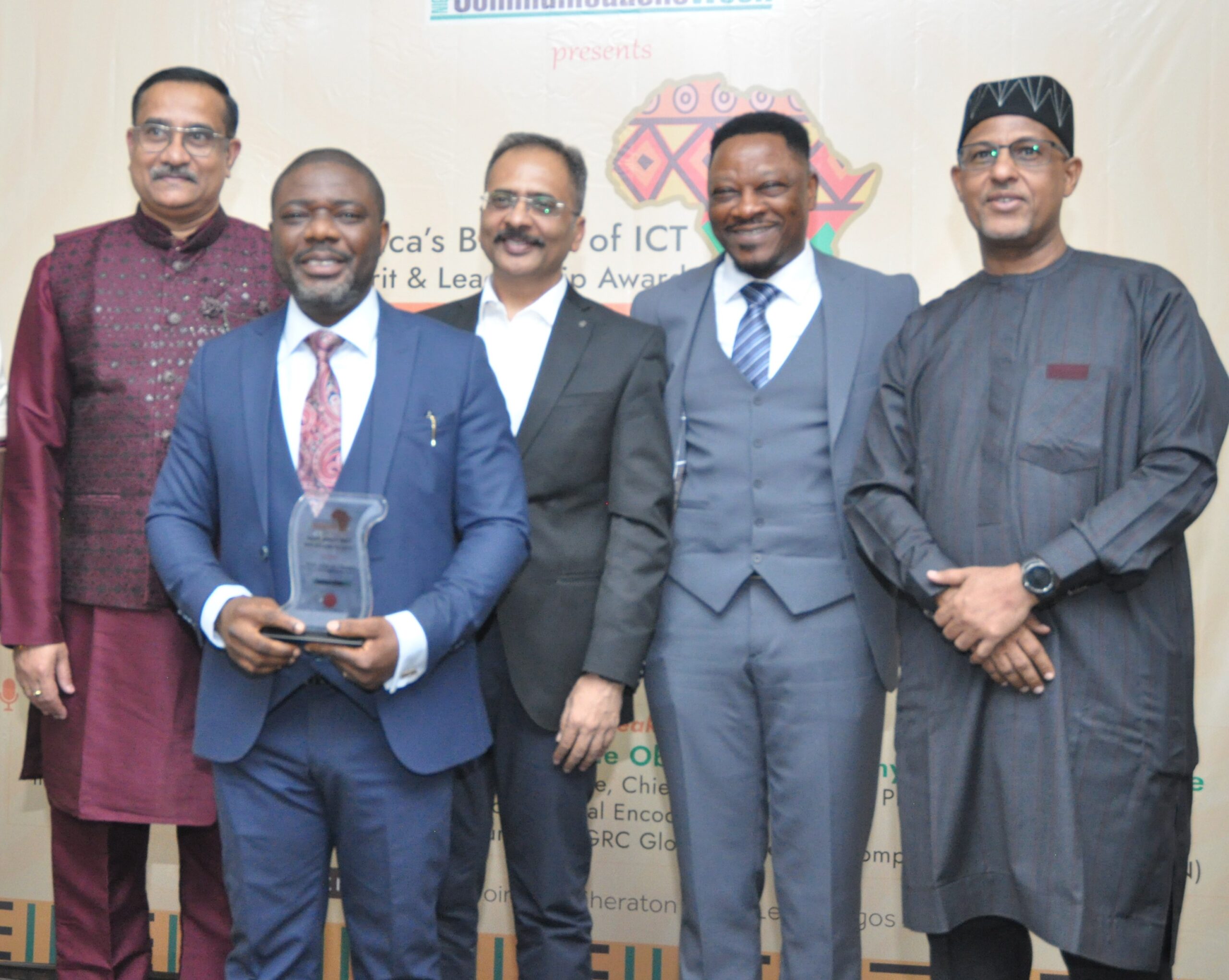Telecom
Danbatta Elected into Nigerian Academy Of Engineering Council

Prof. Umar Danbatta, Executive Vice Chairman/Chief Executive Officer (CEO). Nigeria Communications Commission (NCC) has been elected into the Nigeria Academy of Engineering (NAE).

He was elected into the highest decision making body of the Academy as a result of his outstanding role in the development of engineering profession in Nigeria.
The Council oversees the country’s highest professional bodies in science, technology and engineering.
The Notice of the election, conveyed by Honorary Secretary of the Academy, Engr. Christy Adelowo indicated that Danbatta and other council members will serve for two years. Danbatta, a professor of telecommunications engineering with several decades of experience in academia and professional practice, was inducted as a Fellow of NAE on June 21, 2018, during the Annual Lecture and Investiture of the 10th President of the Academy.
Reacting to the development, Danbatta expressed delight to the Council for considering him worthy to serve the profession in another capacity.
“The Council can count on my intellectual and moral support towards the achievement of the overall objectives of the Academy”, Danbatta said.
Danbatta’s contributions to the engineering profession have been eloquently attested to, with several public lectures, including one at the Academy on November 9, 2016, titled “The National Broadband Plan as Catalyst for Social and Economic Transformation: The NCC Mandate”. On June 23, 2021, Danbatta received special recognition from the NAE in appreciation of his contributions through the remarkable implementation of various programmes of the Commission which has seen very purposeful collaborations with academia and other professional institutions in science and technology towards the advancement of the socio-economic development of Nigeria.
Danbatta has severally played similar roles in the past, including his two terms as a Member of the Council for the Regulation of Engineering in Nigeria (COREN). He is a Fellow of the Nigerian Society of Engineers (FNSE), a Fellow of the Renewable and Alternative Energy Society (FRAES), and a Fellow of the Nigerian Institute of Electrical and Electronics Engineers (NIEEE).
Telecom
Glo, Huawei, Communications Ministry Bring Digital Services to Abuja Village

Telecommunications and digital services provider, Globacom, has partnered with the Federal Ministry of Communications, Innovation and Digital Economy and Huawei Nigerian Enterprises, to provide digital access to 7,000 remote communities in Nigeria with the commissioning of the pilot project in Isuanin Kura in Ibwa 2, Gwagwalada, on the outskirts of the Federal Capital Territory, Abuja on Wednesday.

The project, which is championed by the Ministry, will deliver 2G/3G/4G services, free public Wi-Fi access, digital healthcare and remote learning capabilities to the over 12,000 residents of the community.
Minister of Communications, Innovation and Digital Economy, Dr. Bosun Tijani, was full of commendation to Globacom and Huawei for supporting President Bola Tinubu’s commitment to addressing the connectivity crisis affecting more than 20 million Nigerians who currently lack basic telecommunication access in the country.
Said he: “If you bring out your phone in many communities, there is no network at all. This is costing the country significantly because people cannot access financial services, medical care, or education”, adding that this also poses governance challenges as disconnected areas are difficult to administer.
“Where you live should not determine your access to opportunity. We are using innovation to ensure every Nigerian, regardless of location, can thrive in the digital age”, the Minister added.
Globacom’s Group Chief Technical Director, Mr. Sanjib Roy, who spoke on the project said the company worked with the Ministry and Huawei to bring up the site by providing the Microwave backhaul link and access to Globacom’s full core network resources and also manage the operation of the site to ensure uninterrupted voice and data services for the community.
“The Smart Education facility allows for young students within the community to receive education remotely, with the teachers being in Abuja or any other part of the world, while Healthcare delivery has been revolutionised through connected medical equipment that enables remote consultations between patients in Ibwa and doctors and specialists in urban-locations”, Mr Roy explained. The site and all the equipment are powered by solar thereby ensuring clean environment and uninterrupted power supply.
During the inauguration, the system’s effectiveness was demonstrated with the leader of Isuanin Kura, Ibwa 2 Community, Chief Abubakar Bamaiyi, having a live consultation with a medical doctor in Abuja, while the Minister and other guests watched as the students in the local school were being taught via online video by a teacher in Lagos, using equipment provided by Huawei.
Mr Kazeem Kaka, Globacom’s Head of Division, North West, who also spoke at event, said, “For Globacom, this is a continuation of our long-standing mission to democratize access to communication. Since 2003, we have remained at the forefront of efforts to lower the barriers to connectivity—making telephony, internet, and data services more accessible and affordable for all Nigerians.
“Today’s launch reinforces that commitment. We are particularly excited about the impact this initiative will have on education, healthcare, and economic empowerment of Ibwa people”.
In his remarks, Mr Terrens Wu, Managing Director, Huawei Nigerian Enterprises, said his company was proud to be part of the initiative to provide connectivity, and promote learning and healthcare in rural communities through digital technology. His company later gave out 120 affordable smartphones to the community to help them have access to telephony.
Telecom
NIMC Targets 95% National ID Enrollment by December 2025

National Identity Management Commission (NIMC) has unveiled an ambitious plan to register at least 95% of Nigerians into the National Identity Database before the end of 2025, aligning with President Bola Tinubu’s Renewed Hope Agenda on digital governance and inclusive development.

Speaking at a media briefing in Abuja, NIMC Director-General Abisoye Coker-Odusote outlined the agency’s strategy, which includes expanded registration centers, improved infrastructure, and intensified public sensitization campaigns.
“As part of our efforts, we are launching the Ward Enrollment Exercise to ensure that at least 95% of Nigerians are captured by December,” she stated.
NIMC reported that over 120 million Nigerians have already been enrolled, with the target set to register an additional 100 million before year-end. Coker-Odusote emphasized that the exercise would provide the government with accurate population data, enabling better planning and resource allocation.
Addressing concerns about data security and public trust, the NIMC boss assured Nigerians that robust measures have been put in place to safeguard personal information.
She highlighted initiatives such as the NIN Authentication system, which allows individuals to control access to their data through user consent management.
Additionally, NIMC is collaborating with security agencies to track and shut down fraudulent NIN websites while working alongside the Nigeria Data Protection Commission (NDPC) to ensure that enrollment officers receive proper certification in data handling.
“To foster trust, we are ensuring that all personnel handling data are certified experts through NDPC training programs,” she explained.
Looking ahead, Coker-Odusote revealed that NIMC is actively working to integrate all ministries, departments, and agencies (MDAs) to eliminate fragmented operations.
She also disclosed plans to launch a Public Key Infrastructure (PKI) initiative, which will enhance trust in government transactions and digital interactions.
“In the near future, MDAs will be able to implement digital signing across platforms, seamlessly exchanging documents within and between various establishments, thereby advancing e-government and the digital economy,” she added.
The mass enrollment drive, coupled with the strengthening of cybersecurity frameworks, positions Nigeria for an inclusive and efficient national identity system that will serve as a foundation for digital transformation.
Telecom
Experts @ ABoICT 2025 Warn of Digital Disaster Risks in Nigeria Without AI Governance

As artificial intelligence (AI) continues to transform the global digital landscape, two prominent technology leaders have issued urgent warnings and strategic calls for Nigeria and Africa to adopt a unified, governance-driven approach to AI development, emphasizing that trust, regulation, and cybersecurity are more important than ever.

L-r: Dr. Krishnan Ranganath, Regional Executive, West Africa, Africa Data Centres, Adewale Obadare, chief visionary officer, Digital Encode, Amrish Singhal, chief operations officer, Spectranet, Engr. Ike Nnamani, Managing Director, Digital Realty Nigeria and Rudman Muhammed, Managing Director, Internet Exchange Point of Nigeria, at the 16th Africa’s Beacon of ICT Merit and Leadership awards held in Lagos recently.
At the 2025 Africa’s Beacon of ICT Merit & Leadership Award (ABoICT 2025), held over the weekend in Lagos, Professor Adewale Peter Obadare, Chief Visionary Officer of Digital Encode, and Amrich Singhal, Chief Operating Officer of Spectranet, independently but powerfully echoed the same sentiment: AI without governance is a ticking time bomb.
Delivering his keynote on “AI Governance, Standardization and Cybersecurity in the AI Era,” Prof. Obadare warned against the rising trend of “AI washing”—where companies label basic software or services as “AI” to capitalize on hype, often without the underlying technological integrity or oversight.
“People are calling everything AI today, from photography apps to basic automation, but no one is talking about AI governance,” he said.
Drawing comparisons to the early days of the internet, Obadare cautioned that failing to integrate security and governance into AI architecture could lead to far-reaching consequences. “We are repeating the same mistake we made with TCP/IP, which was not built with cybersecurity in mind. We cannot afford to make that error again.”
He emphasized that governance should not be seen as a hindrance but as an enabler of safe innovation. “Governance is not a brake to stop movement; it is a brake to make movement safe,” he said.
Citing international standards like ISO/IEC 42001 and ISO/IEC 38507, Obadare called for responsible innovation grounded in clear ethical guidelines, stressing the importance of securing the core components of AI: data, models, and infrastructure.
Echoing similar concerns, Amrich Singhal, chief operating officer, Spectranet in his presentation themed “Responsible AI and Nigeria: Balancing Innovation, Regulation, and Cybersecurity,” stressed that “the countries that will benefit most from AI are not necessarily those with the most powerful models, but those with the most trusted systems.”
Singhal painted AI as a double-edged sword, capable of boosting national productivity while also enabling new forms of cyber manipulation—from deepfakes to identity theft and disinformation. “AI can clone voices, create fake personas, and even undermine democracy. It’s no longer a question of readiness, it’s a question of urgency,” he declared.
He acknowledged Nigeria’s potential due to its youthful, tech-savvy population and its expanding use of AI across sectors like healthcare, agriculture, education, and oil exploration.
However, he criticized existing regulatory structures such as the Nigeria Data Protection Regulation (NDPR) and NITDA’s 2023 draft AI framework as being “underdeveloped, underfunded, and poorly enforced.”
Both experts called for a multi-stakeholder approach to AI governance. Prof. Obadare warned of real-world failures, such as Microsoft’s racist chatbot Tay, Amazon’s gender-biased recruitment AI, and Uber’s fatal autonomous vehicle incident, not as tech failures, but as governance failures.
He also cited cybersecurity breaches, including the 2023 hacking of OpenAI’s ChatGPT and the leak of DeepSeek’s API keys and user data on launch day, to stress that “the danger is not just in the algorithms, but in how we design and deploy them.”
Singhal proposed a three-tiered strategy to build Nigeria’s AI resilience: government must champion AI education, create safe innovation sandboxes, and enforce data laws; private companies must adopt ethical and secure design practices; and civil society must raise awareness of digital rights and AI risks—especially for vulnerable populations.
In a firm conclusion, Prof. Obadare urged that “governance must be embedded by design,” warning that irresponsible innovation has already proven costly and called on both developers and policymakers to act before Nigeria’s AI future becomes a liability rather than a strength.
Meanwhile, Singhal closed with a stark challenge: “AI is already here. The question is not whether to use it, but how. Nigeria must choose whether AI will be a great equalizer or its greatest vulnerability.”
As the nation moves deeper into the AI era, the message is clear: building trust, enforcing cybersecurity, and embedding responsible governance must be at the core of Nigeria’s AI journey, before it’s too late.

 Telecom2 days ago
Telecom2 days agoMTN Nigeria Invests ₦900Bn in 2025 to Boost Network Quality in Lagos & Abuja

 E-Business2 days ago
E-Business2 days agoFirm Reports a 48% Increase in Malicious Packages Threatening Software Supply Chains

 News2 days ago
News2 days agoEFCC Witness Admits Writing Off Arik Air’s $2.3M Debt Amid N76Bn Fraud Trial

 Telecom2 days ago
Telecom2 days agoMTN Nigeria Wins Award for Best Use of Data @MarkHack 4.0 Awards Night

 E-Financial2 days ago
E-Financial2 days agoSenate Passes Harmonised Report on Tax Reform Bills

 News2 days ago
News2 days agoSERAP Urges National Assembly to Reject Tinubu’s $24Bn Loan Request Over Debt Concerns

 Broadcasting2 days ago
Broadcasting2 days agoThe Rave Revolution: How Gen Z and EDM Are Rewriting Nigeria’s Nightlife

 News2 days ago
News2 days agoAnambra Shines in 2025 E-Governance Rankings, Setting National Standards




























